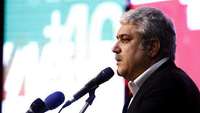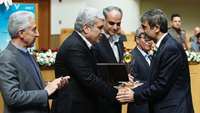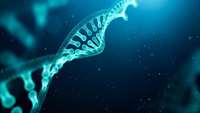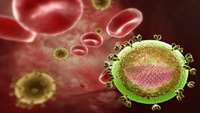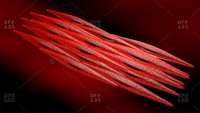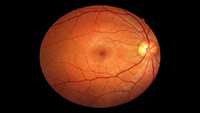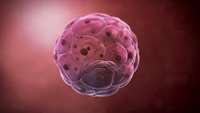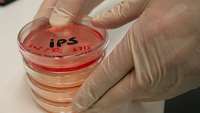Iran will no longer need the import of medications owing to its knowledge-based and startup ability
According to the vice president for science and technology affairs, knowledge-based companies and startups have placed the country on the pass of meeting 97% of medication needs through innovation and role-playing of the private sector. Soon, new and Iranian made medications will enter the market to decrease the import rate in the area of health.
The Vice President for Science and Technology Affairs Awarded the Kharazmi Winners
The closing ceremony of the 32nd international Kharazmi festival was held in the presence of Sorena Sattari, the vice president for science and technology affairs, and Mansour Gholami, the minister of science, research, and technology
CRISPR gene editing makes stem cells invisible to immune system
UC San Francisco scientists have used the CRISPR-Cas9 gene-editing system to create the first pluripotent stem cells that are functionally "invisible" to the immune system, a feat of biological engineering that, in laboratory studies, prevented rejection of stem cell transplants.
Second man seems to be free of HIV after stem cell transplant
A London man appears to be free of HIV after a stem cell transplant, the second success including the "Berlin patient", doctors reported.
Researchers develop drug to rejuvenate muscle cells
Researchers from The University of Texas Medical Branch at Galveston have developed a promising drug that has proven to significantly increase muscle size, strength and metabolic state in aged mice, according to a study just published in Biochemical Pharmacology.
Team identifies developmental stage for no. 1 eye tumor in children
Investigators at Childrens Hospital Los Angeles have been able to pinpoint the exact stage of development of the human retina, when cells can grow out of control and form cancer-like masses. The finding could open the door for future interventions in retinoblastoma (RB), a tumor of the retina that affects children under five years of age.
The source of stem cells points to two proteins
Mammalian embryos are unlike those of any other organism as they must grow within the mothers body. While other animal embryos grow outside the mother, their embryonic cells can get right to work accepting assignments, such as head, tail or vital organ
New method for studying ALS more effectively
The neurodegenerative disease ALS causes motor neuron death and paralysis. However, long before the cells die, they lose contact with muscles as their axons atrophy. Researchers at Karolinska Institutet in Sweden have now devised a method that radically improves the ability to study axons and thus to better understand the pathological development of ALS. The method is described in the scientific journal Stem Cell Reports.
Researchers demonstrate the efficiency of producing stem cells from the tissues of the umbilical cord
RUDN researchers have proposed freezing parts of human umbilical cord, among other things, to obtain stem cells. Unlike conserved umbilical blood, the perivascular tissue of the umbilical cord (Whartons jelly) is an effective and safe source of mesenchymal stem cells. An article describing the results of the work was published in Stem Cell Research & Therapy.
Stem cell researchers develop promising technique to generate new muscle cells in lab
To help patients with muscle disorders, scientists at The University of Texas Health Science Center at Houston (UTHealth) have engineered a new stem cell line to study the conversion of stem cells into muscle. Findings appeared in Cell Reports.


